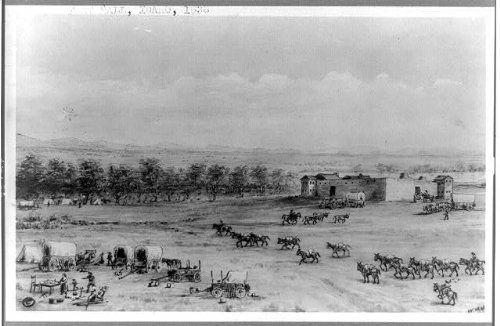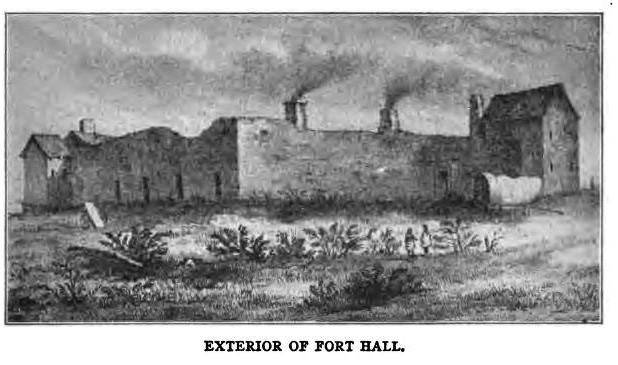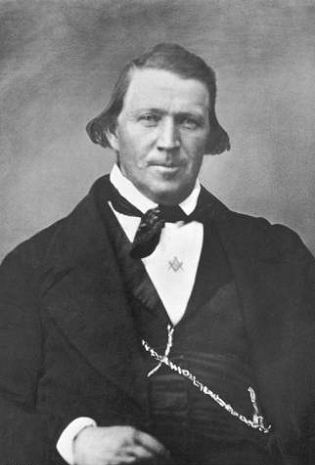The Old Fort Hall was built in 1834 as a fur trading post on the Snake River in eastern Oregon County. After being included in United States territory in 1846 upon settlement of the northern boundary with Canada, Fort Hall developed as an important station for emigrants through the 1850s on the Oregon Trail; it was located at the end of the common 500-mile (800 km) stretch from the East shared by the three far west emigrant trails. Soon after Fort Hall, the Oregon and California trails diverged in northwesterly and southwesterly directions. An estimated 270,000 emigrants reached Fort Hall on their way west.
 |
A marker was placed on the original site of the first Fort Hall by the National Register of Historic Places.
|
 |
Reproduction of the Old Fort Hall recreated in Pocatello Idaho
Interior of Old Fort Hall reproduction.
 |














































